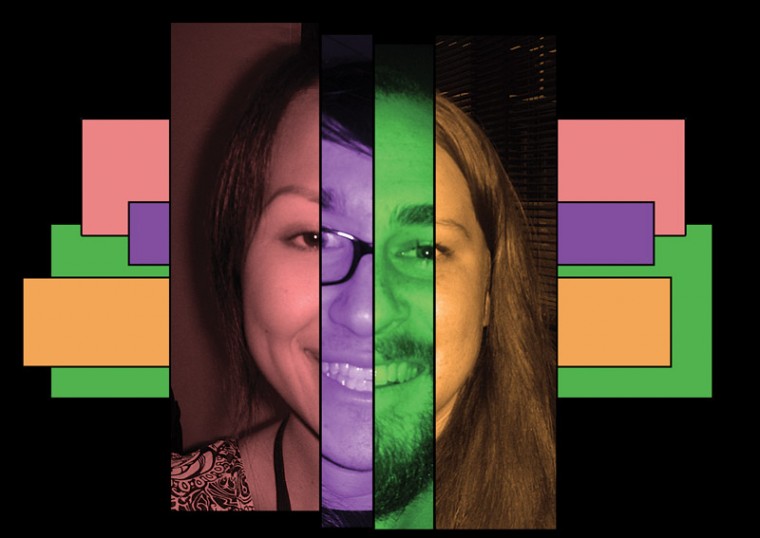Race: Still an issue?
November 7, 2007
Valencia Henley, senior ethnic studies major, said she feels people pass judgment on her because of the color of her skin.
“As an African-American on campus, I feel that I’m constantly being stereotyped and that I have to try and break that stereotype by putting forth an extra effort,” she said in a phone interview.
Henley said the way she feels is due in part to a lack of diversity and understanding on campus.
According to the Office of Institutional Research, Sac State’s data on student ethnicity dates back to 1973. At that time, the school was composed of 22.2 percent minority students and 77.8 percent white students. Today, minority students make up 58.4 percent of students and white students make up 41.6 percent.
The 36.2 percent increase in minorities may sound like a lot, but roughly translates to a 1.2 percent increase each year.
On a statewide level, ethnic breakdown is similar to that of Sac State’s student population. According to the Department of Finance’s Baseline 2006 Population Projections, California currently consists of approximately 43 percent whites and 57 percent minorities.
Although the percentage of minorities is collectively higher than whites, the largest non-white ethnic group is Hispanics and Latinos at 13.9 percent. With such a noticeable difference between the two largest groups, some students believe the gap between white and minority students affects the environment of and ability to learn on campus.
Joaquin Castaneda, senior government and Chicano studies major, said he feels the campus isn’t as accepting of other races as it could be.
“This campus and a lot of the students are just so reluctant to view society through the lens of race,” he said over the phone. “When we start (discussing race) people get uptight. They get defensive.”
He said that feeling also translates into his curriculum.
“It’s problematic in the classroom,” he said. “It comes to a point where it gets tiring…to have to continually legitimize that there is racism on campus.”
Other minority students believe while many people can be racist to an extent, the campus community is generally accepting of other cultures and ethnicities.
In a phone interview, Gurinder Johal, senior public relations major, said people of different backgrounds create an environment that causes students to ask questions and think more critically.
“I feel that most people really aren’t that ignorant,” he said. “I’ve had a lot of people ask me what I am, not like in a bad way, but in a curious way. I like the fact that there are people that are asking questions.”
The racial disparity on campus exists not only within the student population, but also with faculty.
In 2005, 75 percent of Sac State faculty was white.
Ethnic Studies Chair David Leon said because of Proposition 209, a 1996 amendment to the state constitution which made affirmative action illegal in public institutions, the school is unable to retain as diverse of a staff as it might like.
“It has (caused) a debilitating of programs that seek diversity on campus,” he said.
He also said students in the ethnic studies program have told him they learn things in their major classes that they otherwise aren’t exposed to.
Castaneda said underrepresented ethnic groups in the makeup of the faculty put students at a disadvantage.
“On the student end, when there’s not a diversity of faculty, there’s not a diversity of perspective that really gives more of an objective viewpoint of society,” he said. “The experience of this university is different for those of color because we have to, in a sense, defend our own experience…of the injustices that we face in society.”
Johal, who considers himself American-Indian, said he disagrees.
“I don’t feel like the racism is there because this is such a diverse area,” he said. “It’s special…you don’t get this diversity in most other states.”
Even though the majority of his professors have been white, he believes it is the individual experience each one brings that makes all the difference.
“They still have different backgrounds,” he said. “It doesn’t really matter what the race is.”
Castaneda is a member of both Campus Progressive Alliance and M.E.Ch.A. Although the two groups are separate with distinct memberships and focal points, they have similar goals.
“One of the major visions that we have is to politicize the campus,” he said. “To critically analyze major issues that are going on that are facing this nation, that are facing this state.”
He said with regard to awareness of political issues, Sac State is “one of the tougher nuts to crack.”
Something created to combat that problem is the Multi-Cultural Center, which was established in 1990.
According to its website, one of the goals of the center is to “develop an attitude…of acceptance, respect and appreciation for diverse cultures and race.”
However, the center has been without a director since December of 2005, something Castaneda said is a setback for the campus community.
“The Multi-Cultural Center is really not playing a key role on this campus,” he said.
Because of the absence of a director and lack of a staff at the center, student-run organizations have taken advantage of the opportunity to make a difference on campus.
Castaneda said students should feel safe enough to discuss uncomfortable or unpleasant topics in a college environment.
“(The university is) the place to really break down the complexity of race,” Castaneda said.
This is why he and Henley both believe student activism and participation inspires both change and dialogue.
“It seems like race is kept quiet. People are afraid to tackle it,” Henley said. “We’ve got to get rid of that fear.”
Natalye Childress Smith can be reached at [email protected].





























































































































